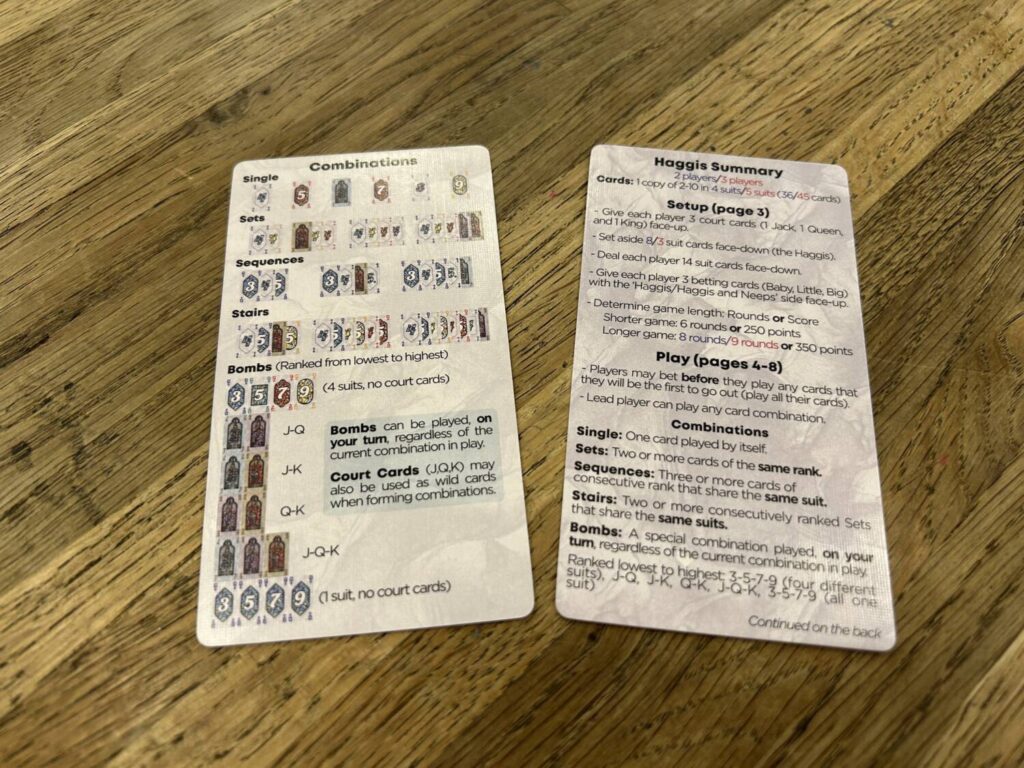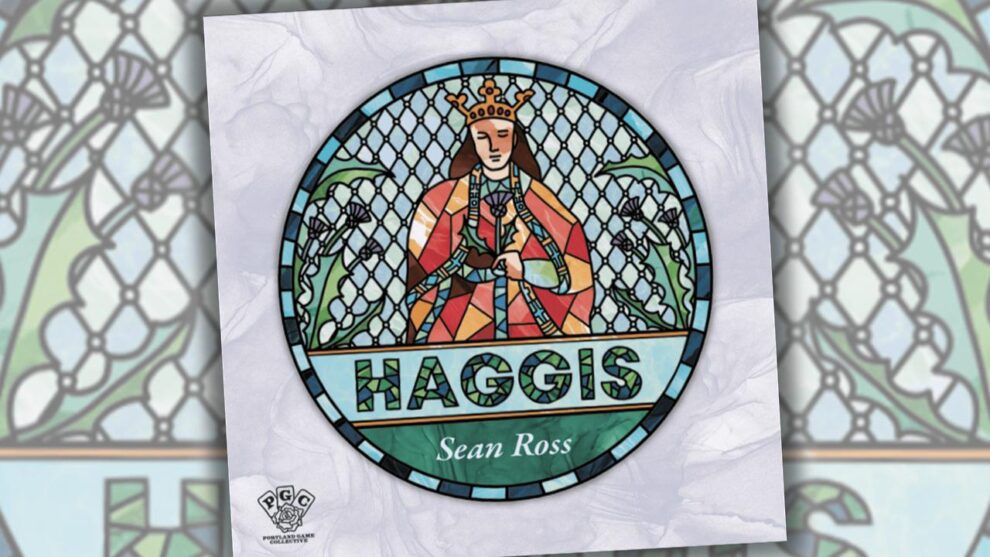Disclosure: Meeple Mountain received a free copy of this product in exchange for an honest, unbiased review. This review is not intended to be an endorsement.
Within the larger family of shedding, climbing, and trick-taking card games, there aren’t many that are well-suited (heh) to two. The Fox in the Forest and Sail are two notable exceptions, but there’s a dearth. Haggis, which first came out in 2010, aimed to change that. I became aware of the game about two years ago, whilst digging around the Internet. It is a cult classic among the trick-taking enthusiasts whose enthusiasms predate the current vogue for the genre.
As is often the case with cult classics among the trick-taking enthusiasts whose enthusiasms predate the current vogue for the genre, Haggis was hard to find. Fortunately, relatively new publisher Portland Game Collective has just released a handsome new edition, replacing the original tartan aesthetic with tasteful stained glass.

What Will You Do with Your (Three) Wild and Precious (Cards)
The goal of any shedding game is to get rid of the cards in your hand. Haggis is no different, but it incorporates a few tweaks to make the whole thing more interesting. The types of combinations you can play are relatively restricted, and the player who plays the first card(s) gets to set the combination for that trick. If my opponent leads with a lone 2, I could be sitting on a 10-card straight, but I don’t get to play it. That’s one of my favorite shedding rules, since it means players have to constantly weigh the advantage of weakening a possible later set in the name of playing something strong now.
Each player starts the round with three face cards on the table in front of them. They can be played as powerful singles, as wilds to fill in the gaps for larger sets, or as part of a Bomb. That’s right, Tichu fans, the Bomb is Back, and It’s Better than Ever. Though the leading player locks the current trick into a particular kind of combination, either player can disrupt that by playing one of six ranked Bombs. If I play a Bomb, you can either respond with a stronger one, or I take the trick.
The true beauty of Haggis, the detail that I return to over and over again as the best part of the design, is that, shy of a great draw, playing a Bomb almost always deprives you of either two or all three of your precious, powerful wild cards. This adds layers to the decision to play one. Did your opponent Bomb you because they want the hand, or did they Bomb you in the hopes that you would out-bomb them, leaving you in a significantly weakened position for the remainder of the hand? Only one way to find out!

Make a Meal of It
Portland Game Collective has done a wonderful job with the production. Though Haggis is strangely difficult to on-board for how simple the newly streamlined rules are, it hums once it hits the ground running. A series of smart decisions help to make everything as intuitive as possible. The publisher included several rules variations in the manual, allowing for various levels of complexity. The original Haggis rules are thornier, but rewarding. The new rule set that allows for team play is fine, but once you’ve got four players, there are better games you can play.
At two, Haggis is a charmer. Allplay recently published another Sean Ross design, the climbing game Bacon. There are a lot of shared features between the games. Wild cards, locked combinations in each trick, Bombs. The man has a type. While Bacon left me cold, a lesser version of a perfect game, Haggis works. I’m not sure there’s anything about it that sings for me. Unlike the best games in the genre, I don’t find myself thinking about it when I’m not playing. But it works because it fills a need, and it fills that need beautifully.
A shedding game for two players. What a country.












Add Comment